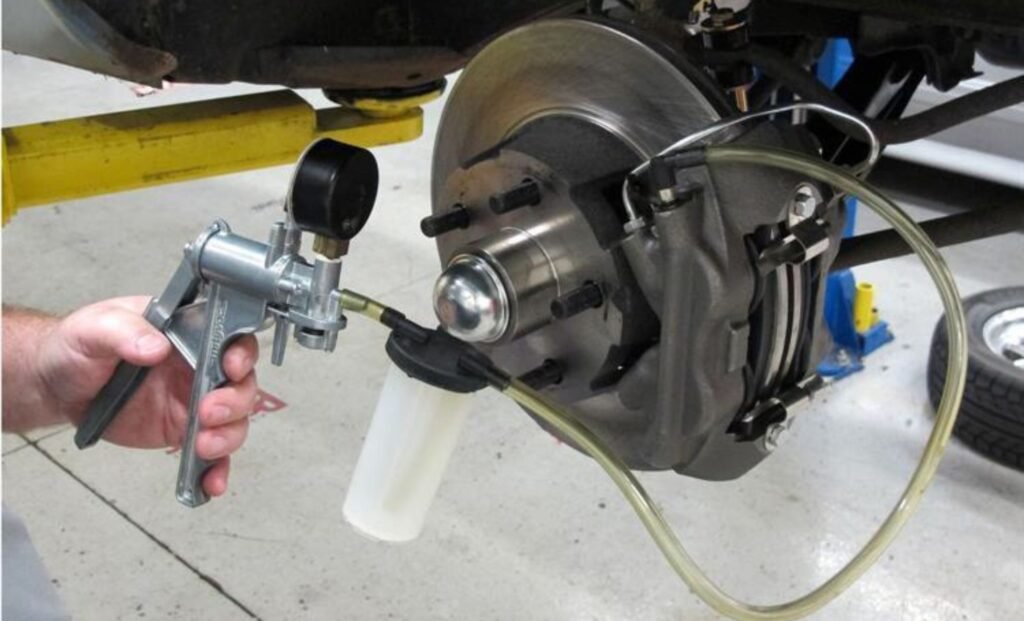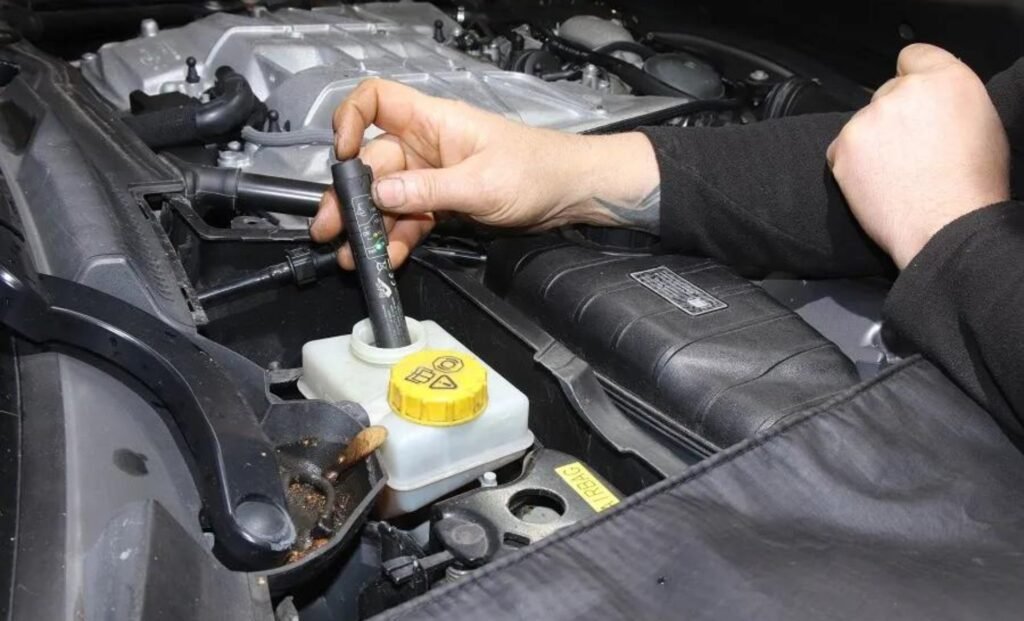Brake Pedal Firm or Fuzzy: Brakes have several moving parts; when one is damaged, the rest of the system starts alerting the car owner. While there are several warning signs, the squishy or soft brake pedal is the focus of this blog post as we examine the cause and possible solutions to this common issue.
If the brake pedal is too mushy, what is it?

When pressing the brake pedal of an automobile doesn’t have the usual firmness or feels unusually mushy, the phrase “soft or spongy brake pedal” describes the problem. The brake system, specifically the hydraulic components like brake fluid and lines, is likely to blame when this problem occurs.
Reduced hydraulic pressure and a mushy pedal feel caused by water or air entering the brake lines can reduce stopping response. Troubleshooting typical causes include:
- Brembo master cyndrical tube failure.
- Air bubbles in the brake lines.
- Improper brake fluid blood loss.
Driving with a soft brake pedal is risky because it could make it more difficult for the vehicle to stop quickly. If this problem arises, it is critical to have a skilled technician inspect and repair the brake system immediately so the car can continue to function safely.
Why does a soft brake pedal occur? Brake Pedal Firm or Fuzzy
Brake Lines using Air: A mushy pedal indicates that the brake lines must be adequately hemorrhaged or conserved, as air may enter the lines and disturb the hydraulic pressure.

Risk of Moisture Contamination: When brake fluid becomes wet, it degrades, making the pedal feel incredibly mushy and diminishing its effectiveness.
Issues with the Primary Cylinder Installation: When the master cylindrical tube is deteriorating or missing a portion, it cannot generate sufficient hydraulic pressure, resulting in insufficient pedal suppleness.
Frayed or otherwise damaged brake lines may lose fluid, reducing hydraulic tension and leading to a mushy pedal.
Defects with the Brake Booster: Problems with the brake booster can weaken the braking system and make the pedal seem softer, as it increases pedal pressure.
Unclean or contaminated brake fluid may prevent applying the proper hydraulic tension, leading to a soft pedal sensation.
Problems with the Hydraulics: The pressure distribution and the pedal’s subsequent squishiness might be affected by issues with the hydraulic components, such as seals or shutoffs.
How exactly do I handle a spongy brake pedal? Brake Pedal Firm or Fuzzy
Stop the Blood Flow: Learn how to use a bleeding set to remove air from the brake lines properly.
Be sure you use the correct type of brake fluid to fill the storage tank with the recommended volume of brake fluid.
Locate Any Leaks: Locate any leaks in the stopping liquid by inspecting the lines, calipers, and master cylinder. Fix any leaks and replace any components that have been damaged.
Assessing the Primary Cylinder: Make sure the master cylinder is in good working order and replace it if worn or broken.
Examine the Brake Part: Find out what’s wrong with the braking pads, shoes, and rotors. It is important to replace worn parts to ensure proper brake involvement.
Thoroughly remove air from the brake lines using the proper method and a bleeding set.
Check Brake Fluid: Before filling the storage tank with brake fluid, ensure you’re using the correct type of brake fluid.

Keep an Eye Out for Leaks: Look for brake fluid leaks in the master cylinder, lines, and calipers. Fixing leaks and repairing damage should be prioritized.(If you want to develop this kind of website by professional web developers you can contact with them).
Conclusion
As a last point for the blog, You can benefit from watching for these signals. Save time and effort. Repairing a problem before it causes major harm to the truck or others on the road is possible using rapid methods.
We are happy to tell you that your needs may be met at Used Engines if you are still looking for high-quality used engines and transmissions. To get more information about what you need, visit our website.



